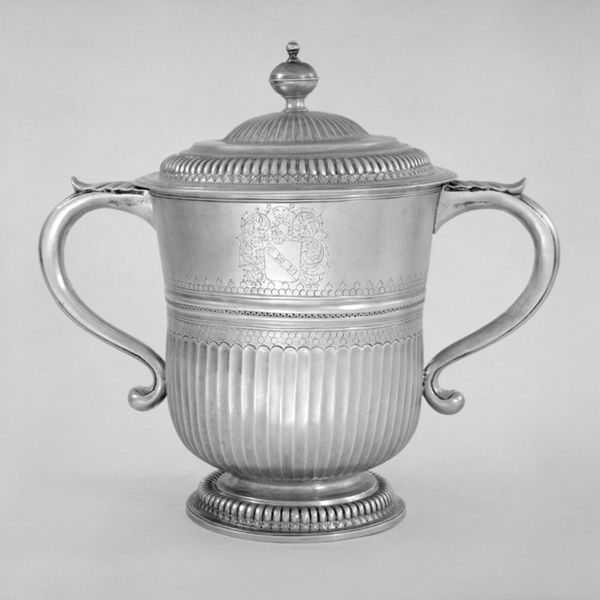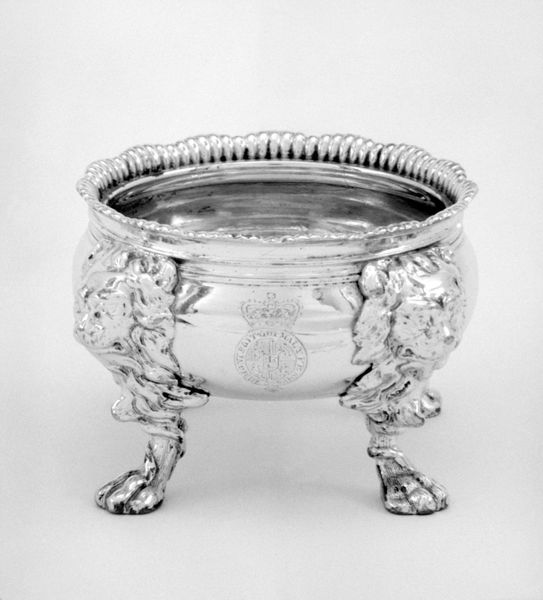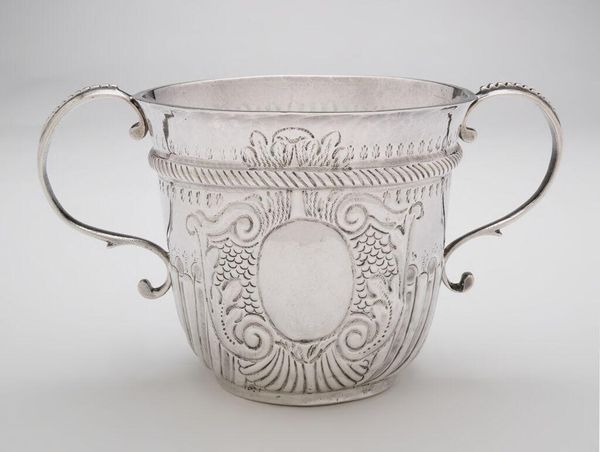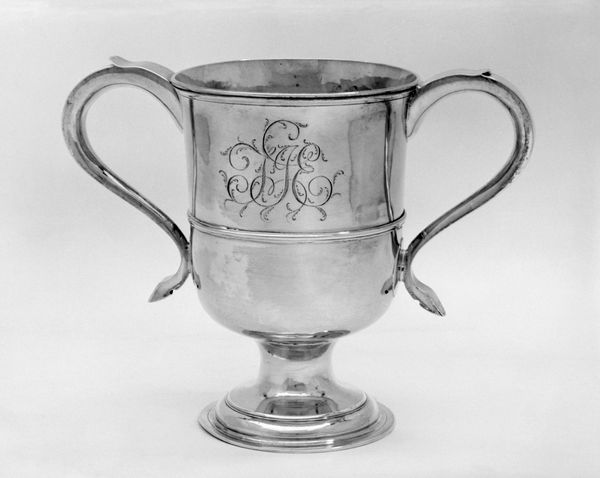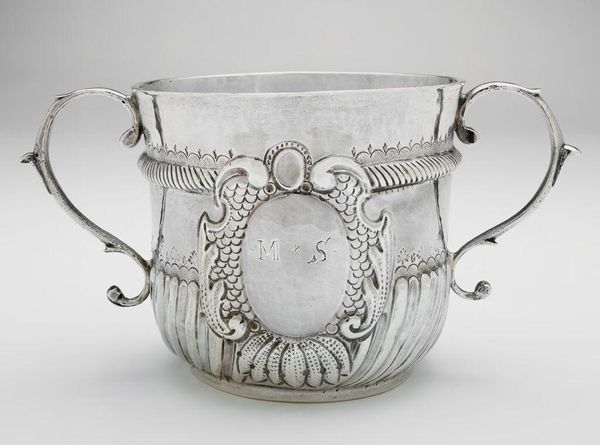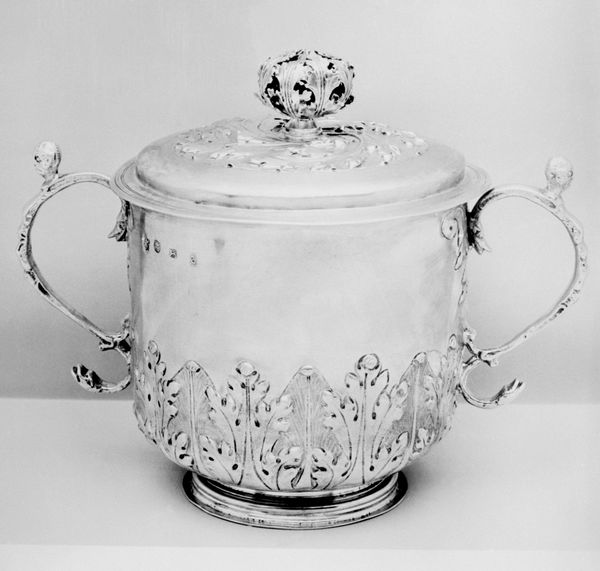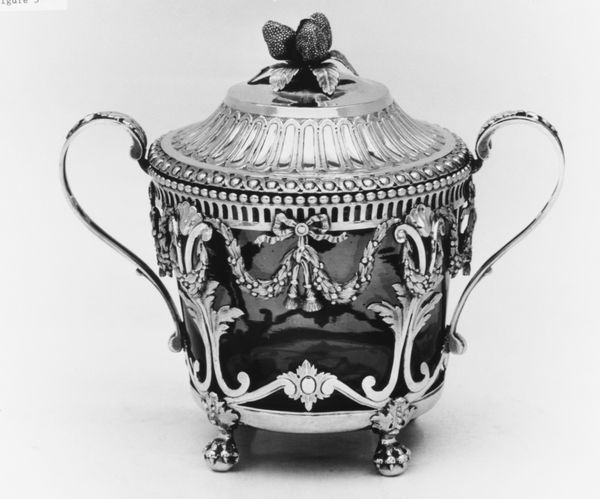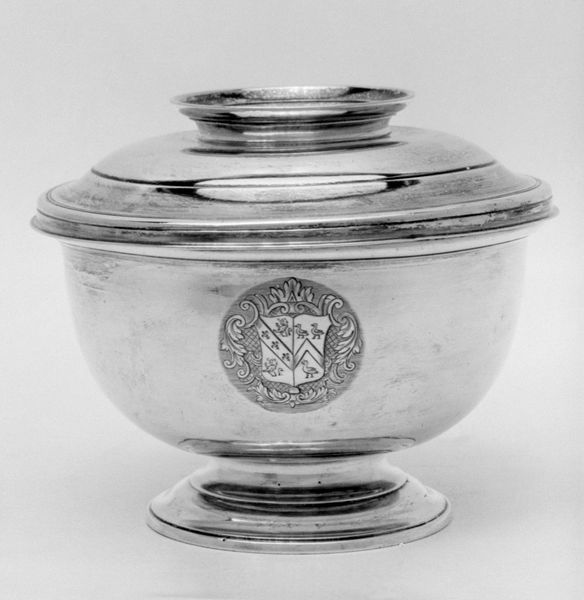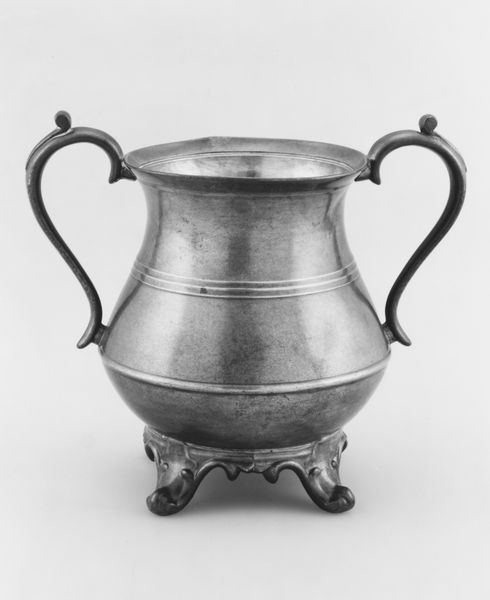
silver, metal, sculpture
#
silver
#
metal
#
sculpture
#
decorative-art
Dimensions: 3 5/8 × 4 5/8 in. (9.2 × 11.7 cm)
Copyright: Public Domain
Editor: Here we have a silver two-handled cup, made around 1729-1730. It feels very formal and meticulously crafted. I notice an inscription on it too. How do you interpret this work? Curator: The formalism you pick up on is crucial. Silverware in this period speaks volumes about power and status. Consider who owned it. The inscription hints at a specific family, a lineage invested in projecting its image. It's not just a cup; it's a declaration. How do you think the decorative choices reinforced their status? Editor: I guess the craftsmanship itself—the intricate details and symmetry—shows wealth, but were there specific motifs or styles that communicated power at the time? Curator: Exactly. Think about the social and economic structures of the time. Who were excluded from such displays of opulence? What does this object tell us about inequality, access, and the visual language of class? Silver, while beautiful, carries a history steeped in colonialism and exploitation of resources. The labour to produce the object should also be considered, too. What feelings do these insights evoke for you when looking at this cup? Editor: It does give me a different perspective, thinking about what the cup represents versus simply admiring it. I appreciate it as a skillfull work, but it is very interesting how it carries a lot more socio-economic meanings from that period. Curator: Precisely. This object can become a starting point to discuss wealth, privilege, and inequality. Editor: Thanks! It’s definitely reshaped how I see decorative arts from this period.
Comments
No comments
Be the first to comment and join the conversation on the ultimate creative platform.


